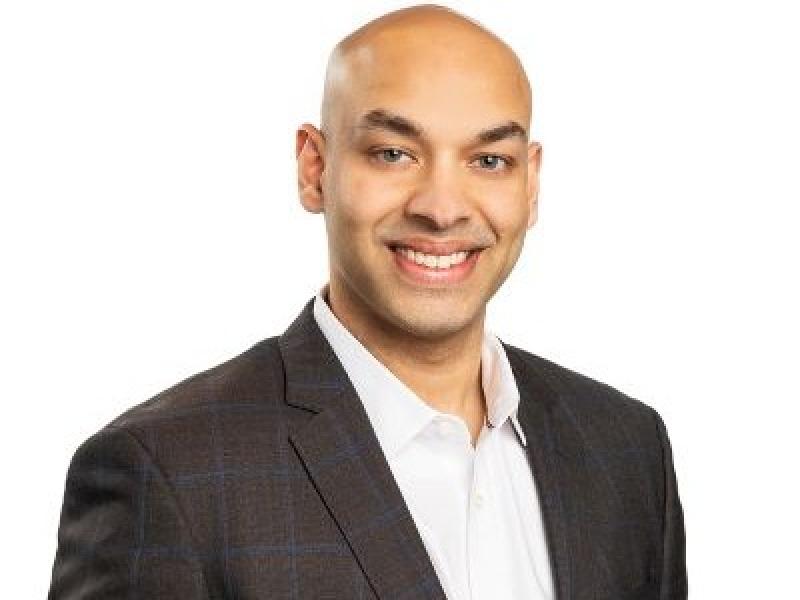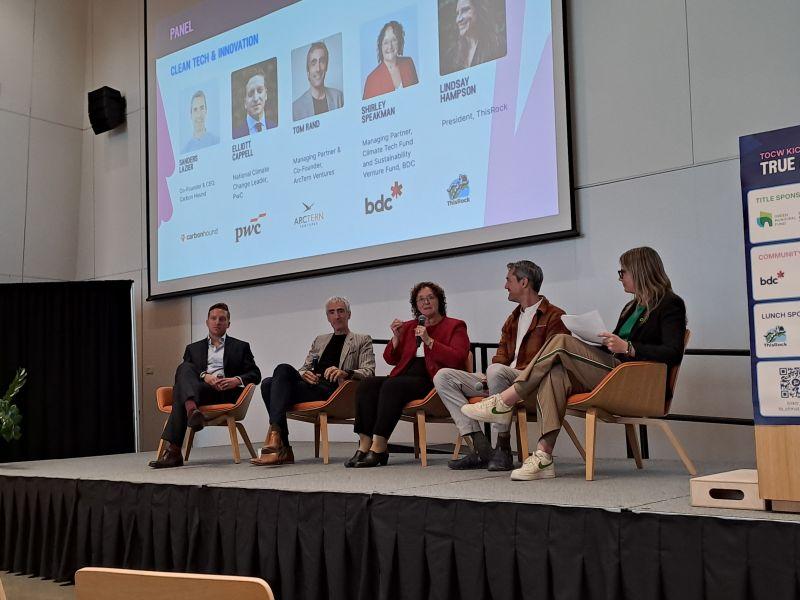
Industry experts discussed the relationship between proptech and ESG during the BOMEX Virtual 2021 conference (Courtesy BOMA).
Increasingly powerful property technology platforms are giving builders and property managers the tools they need to respond to shifts in investor priorities, attendees at the BOMEX Virtual 2021 conference heard.
Experts from Arup Canada, Ivanhoé Cambridge and Schneider Electric discussed the connections between building construction and management and ESG, and how proptech can help advance both.
Investors are increasingly asking asset managers to report their buildings’ environmental, social and governance (ESG) performance through various reporting frameworks.
Session moderator Hazel Sutton, the director of sustainability and innovation for BOMA Canada, opened the discussion by asking panellists how the approach used by investment management firms has changed.
“We all observe a shift in the investment approach,” said Kaliyur Sridharan, senior director, growth programs, Schneider Electric. “We see a shift in the investor looking at the investee.”
Building industry’s ESG approach broadens
According to Sridharan, investors’ new priorities are as follows:
– they want the environmental profit first, along with a financial return;
– they need to know what the environmental impact of a project will be;
– they need to address risks and determine how to manage them.
Millennials and Gen Zers will also help drive the shift toward new priorities.
“Most of the big property developers understand that their brand is associated with the physical infrastructure that they build, and they don’t want to represent something that isn’t about the future,” said Matt Humphries, associate principal, structural engineering, Arup Canada.
“There’s increasing focus on developing projects that not only return investor dollars in the long term, but maintain the brand position of the developer that they’re a quality long-term player in the real-estate market, in the communities that they work in.
“At Arup, we find the people who engage with us understand that long-term permanence that they’re trying to create and building a facility that represents their brand as quality and connected to the community.”
The panel also discussed the shift to a broader ESG approach involving brand accessibility, equity, diversity, and resilience including threats such as flood mitigation or earthquake risk.
Sustainable investments can be profitable
Stephane Villemain, vice president, corporate social responsibility, Ivanhoé Cambridge, discussed the implications of these new paradigms for building managers.
“We still very much focus on returns, but risk-adjusted returns and long-term returns,” he said. “Given this long-term view, and the exposure that buildings have to changing conditions – environmental and social conditions – clearly we pay closer attention to those ESG factors and the way they have been equated in the building management and the extent to which they would affect performance.
“So I would say it’s not so much a shift away from returns, but it’s maybe more aiming for double impact – both financial and measurable positive environmental and social outcomes.”
He went on to say investors believe sustainable investments are profitable investments.
“There is more and more literature that actually demonstrates this connection between financial value and ESG performance.”
KPIs and challenges affecting ESG
A recent Knight Frank study in the U.K., found a 12 per cent rental premium between buildings that have more certifications and are considered “greener” and buildings that aren’t certified.
“I would say that a challenge that we often face in the industry is the alignment of interests between investors, their asset managers and also their tenants in terms of making progress toward those ESG goals that we all have at the end of the day,” said Villemain.
Humphries said collaboration across disciplines in the design of a building can be beneficial.
“A collaborative approach, where you’re not focusing primarily on mechanical systems or on architectural appearance, can really drive energy performance both in terms of dollars per square foot and carbon tonnes per square foot,” he said. “Those things tend to reflect the quality going forward in terms of generating revenue.”
Villemain agreed: “It’s not a single KPI that would help capture the ESG quality of a building.”
Ivanhoé Cambridge manages a number of ESG KPIs, which it groups into ESG scorecards and ratings and shares with building managers. This allows them to see improvements, and what can be done to create further enhancements.
Acquiring data not always easy
Villemain said there are a number of challenges in acquiring the required data. “The more dynamic, live monitoring and piloting of a building is more difficult to do.
“As an investor, when we commit to a net-zero portfolio, it’s not only for the common areas of the building; we also want the carbon footprint of the whole building to be captured and reduced, and that includes tenant-controlled areas.
“One of the challenges we face is being able to collaborate with our tenants to get access to their energy consumption and be able to monitor progress on their side.”
Other challenges include the lack of standardization in portfolio carbon accounting and the lack of EMS sophistication, which can make it difficult to get the required data and act upon it.
Building certifications such as LEED and WELL Health-Safety are also essential to providing investors with a sense of how advanced a building is, and what it would take to bring it to the next level.
The case for proptech
“One of the things that could be a really interesting move for building owners would be to certify their sharing data from their buildings in an open way, because we’ve found that the more we can aggregate data, the more useful it can become in terms of helping to shape the future or applying lessons learned, in some instances, across other buildings,” Humphries said.
Arup recently conducted a study in collaboration with the UK’s Open Data Institute to examine industries which have openly shared data. The shipping industry, for example, started sharing its safety data, which resulted in a reduction in spills, accidents and fires.
“It’s obvious, but what’s measured gets improved,” said Villemain. “We typically see a 15-20 per cent reduction happening in, for example, energy consumption.”
Proptech offers many opportunities in collecting and making sense of building data.
“According to EY research, more than 60 per cent of real estate owners look for two things,” Sridharan said. “One is efficient operations and the second is reducing cost. They have to do both at the same time, so that’s the perfect setting for proptech to enter.”
In building operations “digitization is key”, he added. The dynamic aspects of the building can be challenging, which makes the use of proptech especially important.
Sridharan points out as things change and the pandemic evolves, property owners need to ascertain how reusable or scalable the technology is. He suggests creating a digital version – or “twin” – of an asset and running analytics to help predict future outcomes.
Adding AI into the mix
He also points to AI as a potential solution. “Once you have data, once you have a digital twin at your disposal, the modelling and analytics have to leverage AI techniques,” he said. “So, for example, when a person checks into a facility or asset, how is that asset going to behave in the eyes of the person who is entering?”
Companies can use technology to create models of how buildings “embrace” people as they enter. A digital twin recreates both the static and dynamic attributes of a building to create a holistic picture, which is “almost a simulation” of what one would experience when walking in to a building.
Making a digital twin behave using a set of algorithms allows the system to react to the questions asked by asset managers.
“If you had a digital twin of your car, you’d be getting rid of the owner’s manual,” Humphries noted. “But with a building, which is so much more complex and has so many more intricate features, the digital twin is really a tool that will enable the evolution of the way buildings are managed and operated.”
He also pointed out digital models can be put to multiple uses, from seeing how a pandemic might impact the way people line up for elevators in lobbies, to how different adjustments to blinds, or the operation of mechanical equipment can impact building energy performance.
“It’s like having the capability to run a whole bunch of different scenarios virtually and see what the impacts are, and then implement changes in your asset as you go forward,” he said. “The ability to do that is going to open up millions of different doors.”
Data generated by systems and appliances could be analyzed for patterns.
“The digital twin coupled with AI is going to be a paradigm shift in terms of the way buildings are operated and the opportunity for building operators to change and evolve their buildings over time in a smart, logical way,” Humphries said.










